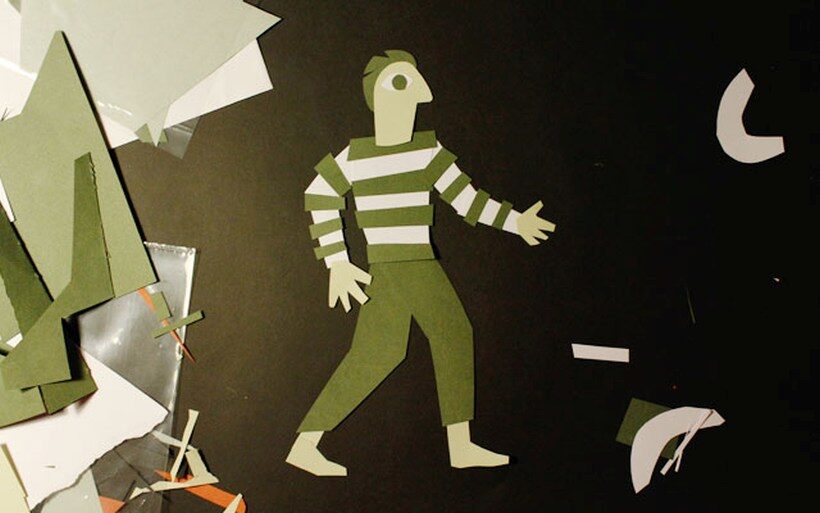
KOLUMBUS – working process © Sonja Rohleder
Columbus gazes happily from the wings of the dove that carries him over and through the world. Visualised by a papercut, a profile that seems to consist only of a nose and a single eye, he appears as an anti-version of the explorer – mischievous, down-to-earth, completely without ambitions of wanting to claim ownership. It’s an unusual protagonist Sonja Rohleder has animated here in co-direction with Veronika Samartseva for Keimzeit’s song Kolumbus, and yet, it’s prototypical of Rohleder’s animation style and production process: reduced characters that peel out of the black background; subtle winks and false bottoms, simple, but with great scope for interpretation. And with lots of music to go with it, please.
Kolumbus (2012) was an important project for Sonja Rohleder, whose films have received the DEFA Förderpreis or the Short Tiger Award, among others, and whose latest project, the trailer campaign for the SHORT FILM DAY on December 21, 2023, will be released on September 21. A music video that she does not consider a commissioned work or a day job, since the Keimzeit singer, Norbert Leisegang, had given her a lot of freedom right from the start. Rohleder was not only allowed to choose the song freely, but also to create the video independently after consultation.
The music video – which would later be followed by another, Das Schloss (The Castle) – was also a conceptual eye-opener for the filmmaker. It was to be the first project in which Rohleder worked from a black surface. She says: “For me, black is the space, while white is the wall.” For Kolumbus, she created the world using analogue and digital cutout together with Samartseva. Although she also works on projects with cartoons, 3D animation and motion, she always finds a way back to cutout animation for her own work.
“The limited possibilities of the cutout allow me to be free,”
she further comments.
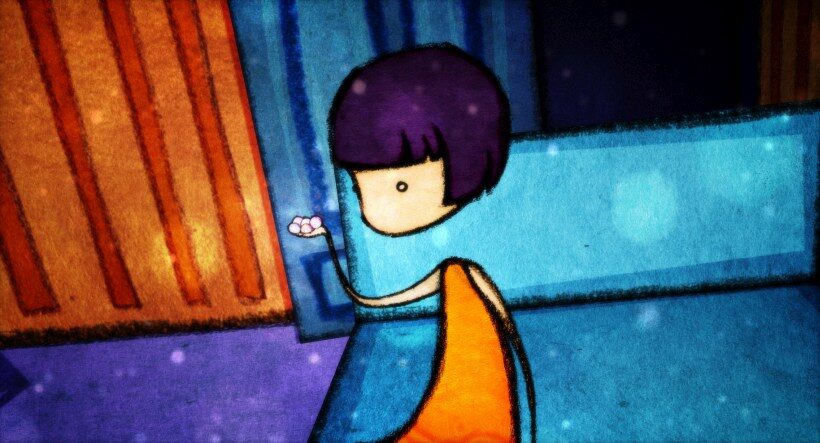
COCOON CHILD © Sonja Rohleder
In the previous film, her graduation film at the Film University KONRAD WOLF, Cocoon Child (2009), this will for reduction is already visible. Here, in a “cotton candy” colour palette, Rohleder depicts a child who is a little different from everyone else: Instead of playing with the doll, she plays with the necklace it wears. The necklace not only becomes a universe that brings happiness, but also offers the possibility of communication with other people. Cocoon Child is based on Rohleder’s engagement with the autobiographical memoirs of autistic author Donna Williams, which had a lasting impact on the filmmaker’s portrayal of a completely different approach to the world. However, its vaguely described plot (and the deliberate absence of the word “autism” in the synopsis) leaves Cocoon Child open to other interpretations. She received letters from viewers whose children live with various forms of disabilities – the film touched the audience in many different ways. ZDF eventually bought the rights to the film for its children’s programme Siebenstein, either because of or despite the seriousness and specificity of the theme.
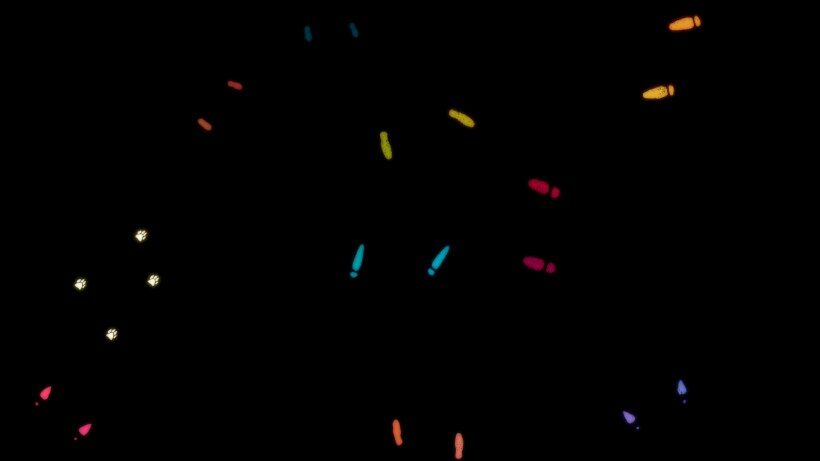
DAME MIT HUND (Walk the Dog) © Sonja Rohleder
After Cocoon Child and Kolumbus, Rohleder visibly refined her minimalist style. During the development of Dame mit Hund (Walk the Dog), for example, she asked herself
“How far can you actually take the concept of mental cinema?”
and decided not to show any characters in their entirety at all, but rather only visualise the traces they leave on the surface. The result: white paws, breadcrumbs, etc. on a black background, animated with a remarkable sense of rhythm and movement. The digital cutout animation was created by Rohleder herself, while characters such as the dog were created by Veronica Solomon, who used classic cartoon techniques to animate them. For the sound design, she relied on the instincts of Michal Krajczok, with whom she has repeatedly collaborated since Cocoon Child.
It’s not the only project in Rohleder’s oeuvre that feels like a classic film from the early days of animation, emanating retro charm, breathing nostalgia. This is not surprising for Rohleder herself: While she was only peripherally aware of Oskar Fischinger and Walter Ruttmann during her studies, the works of both artists now serve as a source of ideas. The fact that she is also drawn to classics in feature films, which tend to be strongly staged rather than naturalistic (such as Fritz Lang’s Metropolis), is consistent with this:
“I need distance and magic in order to build up a closeness to the material, so that I have the space to cut right to the core.”
For her, distance is also a form of omission, of limitation, which enables free thinking.
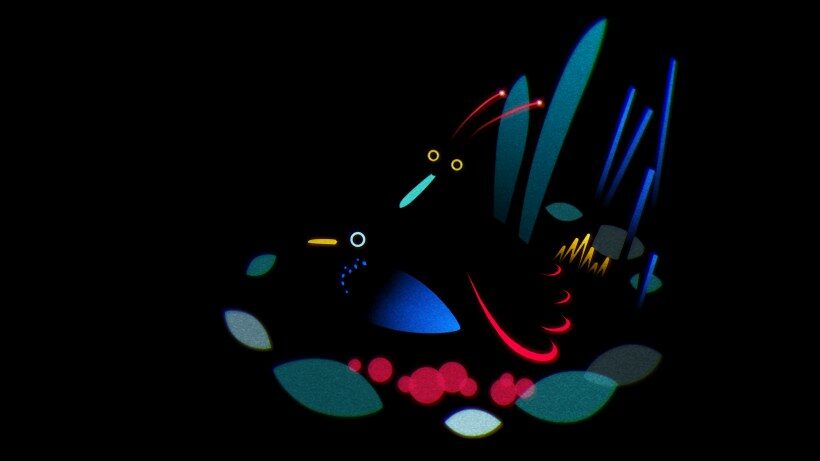
NEST © Sonja Rohleder
In the works that followed, Nest (2019) and Somni (2023), which is currently showing at the festivals, Rohleder perfected the rhythmic element – and continued to work with characters who were at times missing a neck, a torso, or a leg. The story line of Nest: A particularly extroverted bird of paradise frantically tries to woo a few bird ladies – only to ultimately discover that they can get along perfectly without him. Although the film premiered in the Berlinale’s Generation Kplus section, it is at least as ambiguous as Cocoon Child: Couldn’t this wild and hopeless posing even present a buoyant, quiet commentary on the obsolescence of men in the face of in-vitro and co?
The starting point for the film idea – a homage not only to the birds of paradise of Papua New Guinea, but also to Norman McLaren – was the music: Yma Sumac’s album “Legend Of The Jivaro.” The album by the Peruvian-born singer, who mastered at least four octaves and was therefore considered a “songbird” herself, was running constantly when Rohleder was working on Nest. While Rohleder was waiting for the appropriate final music – a tiki jazz song –composed by Jens Heuler, she devoted herself to a project that is also closely linked to music: Quiet, based on a piece by avant-garde pianist Nils Frahm, whose music she had already used for Cocoon Child. Quiet is an important film for the director because during production she renounced all preparations such as storyboard or script and instead set up a simple set of rules for design characteristics, letting the animation start from there.
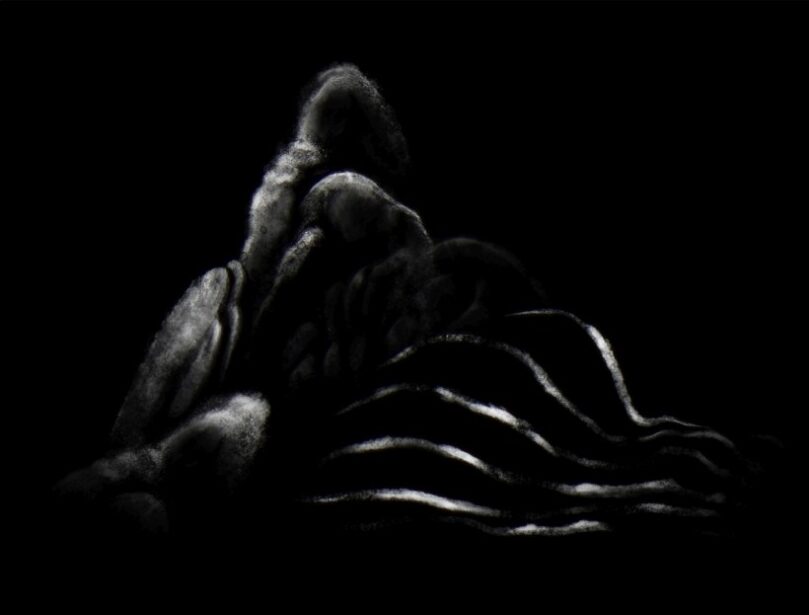
QUIET © Sonja Rohleder
So far, this is her most experimental and her only abstract film, a shimmering, misty dance of circles and strokes, a mixture of drawings and digital animation. The abstraction and the experimentation – her role models include Robert Seidel and Max Hattler – gave her a lot of pleasure and inspired her playful instinct, which is so important for her motivation. The focus on abstraction and associative, inner processes subsequently also played a role in Anne Isensee’s Intro, which Rohleder helped to animate – a film dedicated in a playful yet serious way to an often-invisible protagonist of the film industry: the audio descriptor. Intro makes her thoughts literally visible as well as audible. However, Rohleder believes that not only artists stimulate each other, but also individual works.
Rohleder’s obsession with music and music videos dates back to her teenage years, when she regularly discussed with her friends the latest videos by artists such as Michel Gondry, Jonas Åkerlund, and Shynola. The most interesting videos were collected “in the same way others put stickers in their albums.” It was the golden age of music videos when there were lavish budgets and the moving image artists behind the films rose to prominence. Her fascination with this medium was so profound that she also wrote her thesis at the KONRAD WOLF Film University on music videos.
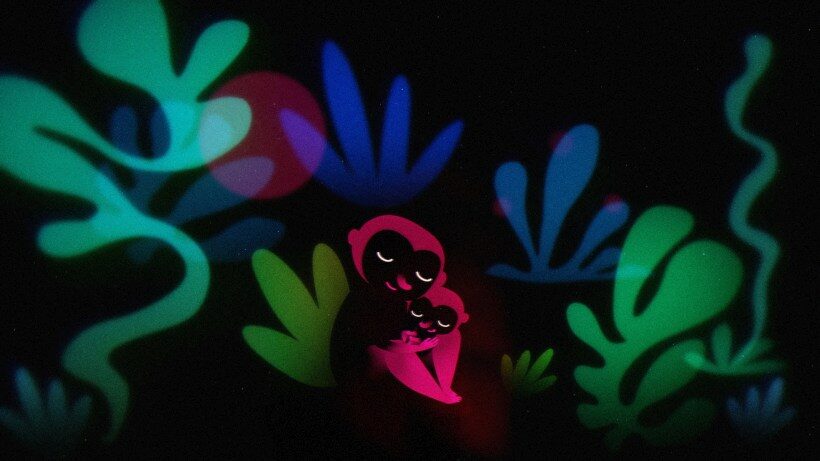
SOMNI © Sonja Rohleder
As with the previous film, Somni, which like Nest premiered in the Berlinale’s Generation Kplus section, reveals not only the influence of music but also another important component of her inspirations (which by the way also includes anime): Art Nouveau, since the elegant, reduced, fluorescent animation has almost ornamental features. Sonja Rohleder based the shape of her main character on the Hei-Tikis, the Māori ornaments that are often worn around the neck. In Somni, a baby monkey falls asleep and then glides down through a jungle on his dream journey, straight into his mother’s arms. It is, in fact, the only project that Rohleder herself conceived as a “lullaby for small children”: After the previous films had already been mostly classified by curators and jurors under the children’s category, this was actually the first time she applied for children’s film funding.
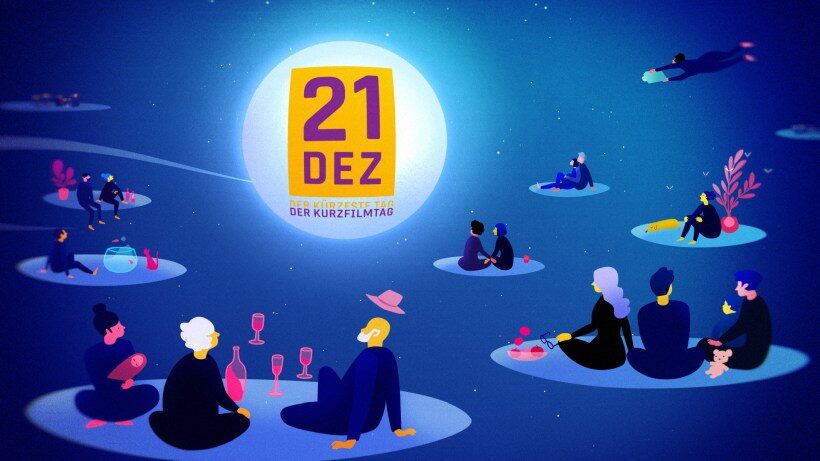
Trailer KURZFIILMTAG (Short Film Day) 2023 © AG Kurzfilm
Whilst Somni, with music once again composed by Jens Heuler, is still touring the world, Sonja Rohleder has already completed new projects. One of them is the teaser for SHORT FILM DAY 2023, which she created on the theme of “In der Schwebe” (In limbo): A spotlight is used to illuminate separate, drifting scenes in which couples, groups of friends, or a woman with a dog sit together. When the SHORT FILM DAY logo lights up like the beginning of a film, it becomes clear that these individual islands are very close to each other, in fact they are connected. Rohleder also identifies with the trailer: She most enjoys watching films in a group and discussing them afterwards. That’s why she often organises film evenings with her colleagues from the animation collective Talking Animals. She works with the collective mainly on commissioned works such as the VR Experience TOM House or for Arte 42 – her own films, on the other hand, she almost always animates alone. But why is that? With her own films, she wishes for the luxury of time and freedom to improvise, requiring no precise division of tasks, no schedules. But without the work in the collective, her films would definitely not be the way they are. After all, the studio is a thought and creativity “incubator” that offers valuable input: constant inspiration and honest feedback, as well as an understanding of the peculiarities that come with the realisation of animated films. From writer’s block to production tricks.
Her next film project after Somni is still in the development phase. Like other filmmakers, Sonja Rohleder does not have a drawer full of ideas that she would like to realise at some point. Rather, the film
“always comes into being at the exact moment I’m working on it. It wouldn’t happen two years later.“
And yet, the birds that play such a central role in Kolumbus or in Nest could also become protagonists again, because
“I like the way birds move; it’s fun to animate them.”
Whether bird, human, or abstract form – one thing is certain: Omission, limitation and reduction will remain principles in the future, while at the same time inviting the viewers to fill the empty spaces with their own thoughts.